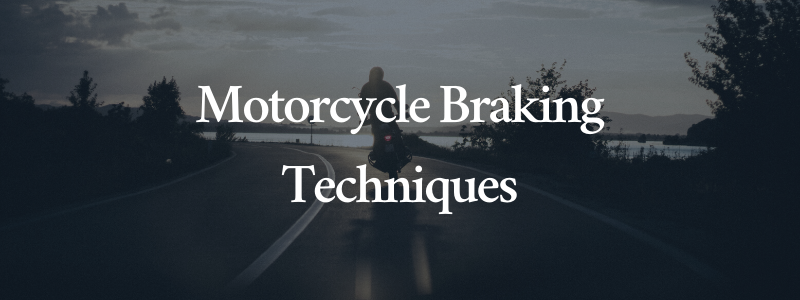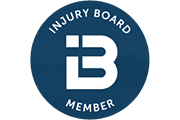For motorcycle riding, good braking is not always just “like riding a bike”. You may well forget how to best use your motorcycle brakes unless you keep practicing. If you get rusty, you may lose your braking edge. Any time you get on your motorcycle after any significant period away from the bike, get a feel for the brakes. Good braking means good control and good control means better peace of mind and more riding enjoyment.
A proficient and safe motorcycle rider should learn the most effective ways to use the front and back brakes for their particular bike and for specific riding situations. And of course, every bike has somewhat different braking characteristics. For your average cruiser, with a low center of gravity, you may want to use more back brake, while on a sport bike, using the back brake may be useless or cause all kinds of trouble. And with an enduro type motorcycle, with knobby tires, your tires and weight distribution are very different from a Ducati 1198.
Also, certain after-market parts may completely change the feel and responsiveness of your brakes. Replacing stock brake pads with high performance brake pads may cause you to notice an immediately different feel. It will likely take some time to get used to the new amount of pressure needed to effectuate braking with the new pads. Changing out your front brake reservoir and lever to a Brembo set up, may make you feel like you are riding a completely different bike, at least when you to slow for a turn or to stop in traffic. Every rider knows that in order to ride well, they must try to ride smoothly, and this takes lots of time working with your new brakes when you get a new bike or when you get some new parts.
Braking, one of the most important skills in motorcycle riding, must be consistently practiced and refined to be effective on the street. Remember when they told you how easy it was to learn, that it was “just like riding a bike”. Really, good riding, especially good braking technique comes with a great degree of practice and patience. When it comes to braking you either use it, or you may lose it.

Traffic Panic
Research shows that many (as much as one third) riders panic when confronted with split second traffic challenges. This state of panic can reduce response time, disable conscious reactions, and cause many to forget to even use their brakes. It’s best to fight future panic by preparing yourself for unexpected braking situations.
For Beginning Riders
Beginning riders, or riders who have been off the bike for more than six months, will benefit from a brush up of braking drills, an abilities check, and if necessary, a beginning rider’s class.
For Advanced Riders
Advanced riders, no matter the skill or experience level, can also always benefit from a quick brush up or an advanced riding class, especially while under the watchful eye of an instructor. Track days are often a great way to practice braking under more varied conditions. It’s far better to experiment with different braking techniques on the track, where you will have a greater margin for error. Practicing braking while down shifting is also easier on the track, and you are also less likely to encounter gravel or an 18 wheeler on the track.
Stopping Power
Anywhere from 60-90 percent of your stopping power comes from your front brakes, depending on the bike you ride. Cruisers may be on the lower end of this scale, with some sport bikes relying almost 100% on their front brakes due to back wheel lift. With this unequal balance of braking power, most bikes actually have two brake discs in the front, with only one smaller disc in the rear. Many riders try to avoid using their back brake at all, unless they are at an intersection or in a parking lot and need to be able to move the front wheel more easily. When a motorcyclist applies the front brake, the rear of the bike unweights somewhat. With a sport bike, hard braking can sometimes even lift the rear wheel off the ground. The more rear wheel lift your bike has under hard braking, the less you will want to use the rear brake. And I would recommend that you never use the rear brake in the middle of a corner, as this can produce an instantaneous loss of traction and control.
Traction
The biggest braking issue faced by motorcyclists is traction control. Although some experienced riders may know exactly how hard they need to brake in a given situation, many riders fail to “read the pavement, which they need to do if they are to have a necessary understanding of the road surface, temperature, and just how hard they may need to brake in varying traffic conditions. Asphalt can be old and cracked, new and smooth, fresh with standing oil from rain, or slippery after a large downpour. Let’s not forget the slippery stripe or manhole cover waiting on a damp roadway or those large metal grates across the lane. And some roads have so much crack sealer that they look like they are being covered by snakes. Understanding how your bike reacts in these various conditions will help keep you safer as you strategize how much braking is needed for each situation.
Tires
Braking relies on traction and a critical part of the traction equation is a function of the tires. Motorcycle tires vary in type and size and performance, and if a rider wants to learn how to best use motorcycle brakes, they need to know the characteristics of their tires. Are they sticky street racing tires, or harder compound long-mileage touring tires, or something in between? And of course, different tire compounds behave very differently depending on age, heat, and pavement characteristics. Tires play a vital role in motorcycle braking, providing the traction while performing braking. When you purchase new tires, be sure to ask what conditions the tires are best suited for and when you should consider purchasing a new set. Worn out tires lose traction more easily, and may well make effective braking more difficult.
Braking 101
Although, as a motorcycle rider, you will get some practice braking each time you ride, practicing some basic braking drills can heighten your road awareness and leave you better prepared when presented with an emergency braking situation.
Some riding instructors suggest finding a secluded parking lot, side-street, or other remote area where you won’t endanger other motorists, where you can work on harder stops and avoidance techniques. While practicing emergency braking, be sure to brake with both the front and rear brakes together, and attempt braking almost to the point of locking up. This will allow you to develop your sensitivity and know just how hard you can push your bike before lock up occurs. Only try this practice technique in a straight line as grabbing that much brake in a turn is likely to cause sudden unwanted loss of traction.
Other maneuvers to practice are braking while cornering as well as brake covering. Brake covering is using two or three fingers to brake, and leaving these fingers on the brake at all times. Covering your brakes can reduce reaction time and result in much shorter stopping distances.
The front brake provides most or sometimes all of the stopping power on a motorcycle.
Braking while cornering presents some unique challenges.
Definitely learn how to brake while cornering, but be careful. Slick pavement, or sand, gravel or spilled oil can put you down in a millisecond if you brake too hard. In fact, if you know it is gravelly or sandy in a corner, avoid the brakes.
One important thing to remember is that a tire can only do one thing at its best at any one given time. What I mean is that a tire can only provide maximum traction for braking if you are not in the middle of a turn and a tire cannot provide maximum traction for turning if you are braking at the same time. And a tire also cannot provide maximum traction for acceleration when you are leaned over turning. I find it is best to get all of my braking done before I enter a turn and then gradually add throttle as I apex and exit the turn. I know there are all sorts of techniques for trail braking and sliding, however for the street, I feel it is usually best to stick to the basics.
In sum, each motorcycle is different and will have varying braking characteristics. It is important to learn the braking capabilities and idiosyncrasies of your motorcycle and to strategize what type of traction your tires and the roadway are likely to provide. And it is important to practice, on a track day or somewhere you are not likely to get hurt.
Take the time, learn your bike, learn your brakes, and stay safe on the road.





